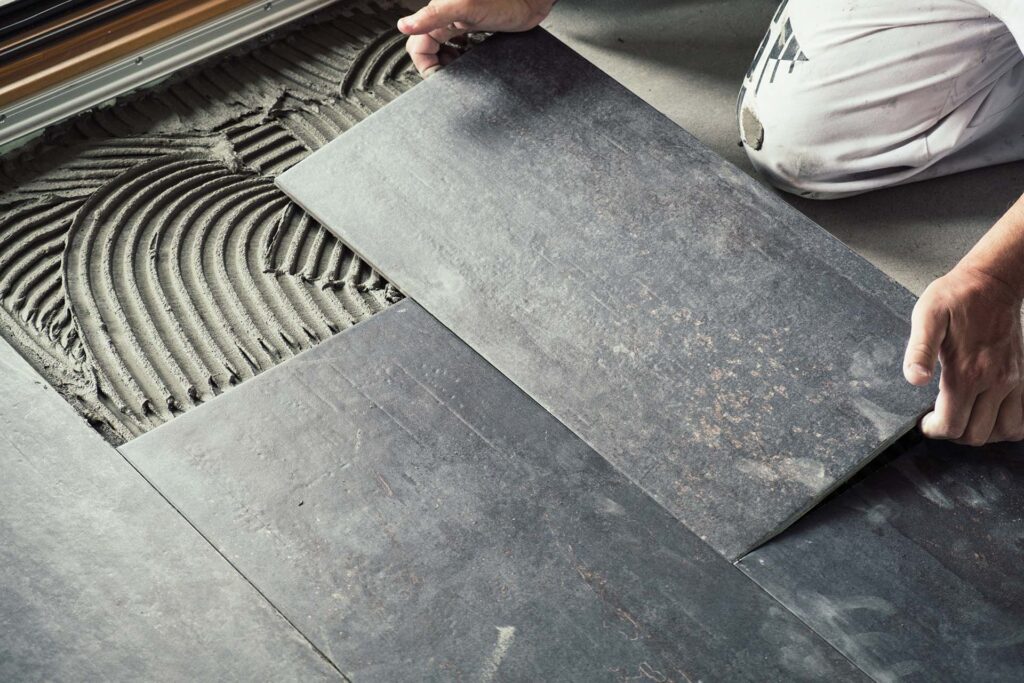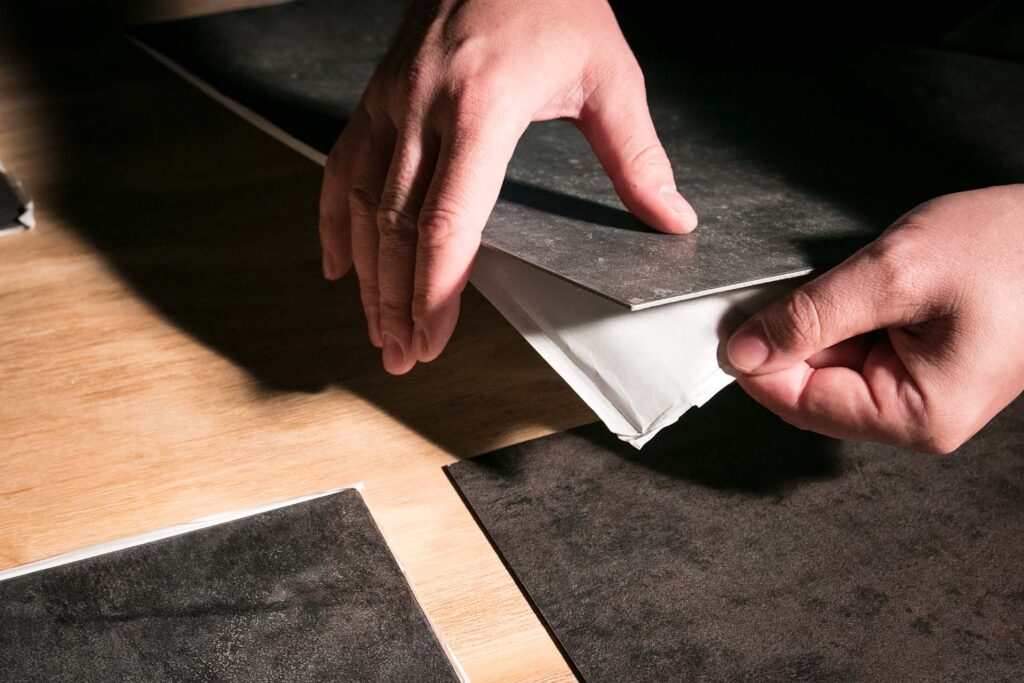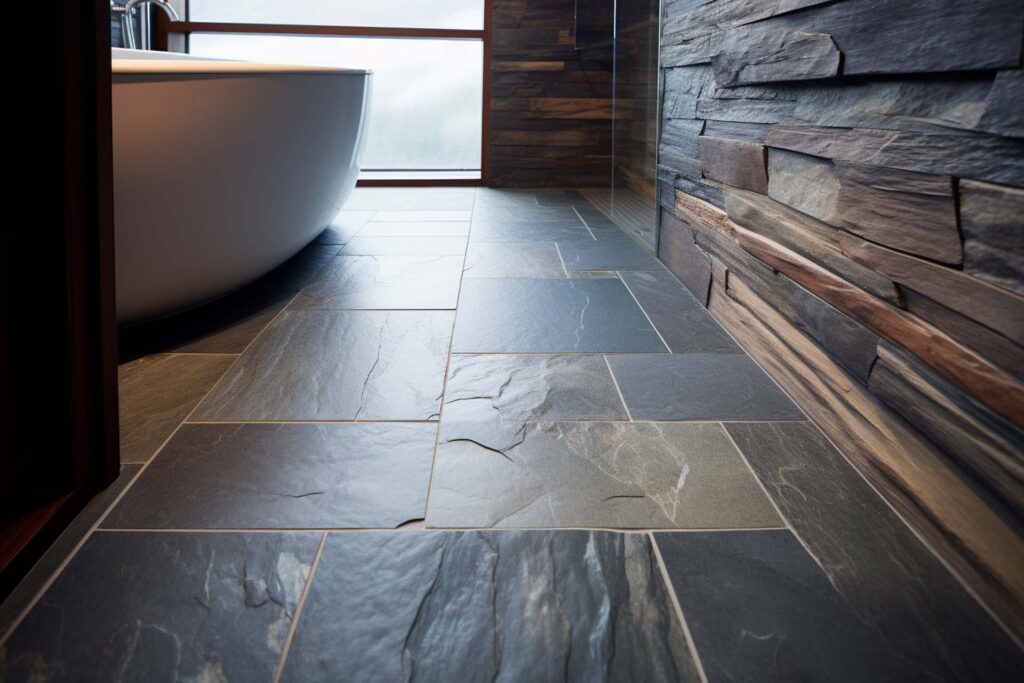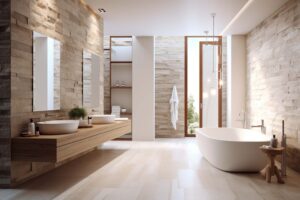In the grand scheme of interior design, the flooring beneath your feet often plays a silent but pivotal role. Nowhere is this more apparent than in the bathroom, where floors bear the brunt of daily foot traffic and moisture exposure. Whether you’re embarking on a bathroom remodel or simply contemplating an upgrade, selecting the right bathroom flooring is an essential decision.
In this exploration of the top 5 bathroom flooring options, we’ll peel back the layers of choices, revealing the pros and cons of each, and guiding you toward the flooring solution that aligns with your style, budget, and maintenance preferences.

1. Ceramic or Porcelain Tile: Unbeatable Durability
The undisputed champion of bathroom flooring, ceramic or porcelain tile boasts durability that can withstand the test of time. It’s impervious to moisture, easy to clean, and available in a myriad of designs, making it suitable for any aesthetic. From classic subway tiles to intricate mosaics, the options are endless.
Pros:
- Waterproof: Resistant to moisture, making it ideal for bathrooms.
- Easy Maintenance: A breeze to clean, with stain-resistant properties.
- Design Versatility: Available in various colors, shapes, and sizes to suit your style.
Cons:
- Cold to Touch: Tile can feel chilly underfoot, especially in colder climates.
- Hard Surface: Not the most forgiving surface for dropped items.

2. Vinyl Flooring: The Resilient Performer
Vinyl flooring has come a long way from its humble beginnings. Today, it offers an attractive blend of affordability, durability, and style. Vinyl can convincingly mimic natural materials like wood or stone, and it’s warm and soft underfoot, making it a comfortable choice for bathrooms.
Pros:
- Water-Resistant: Highly resistant to moisture and water damage.
- Comfortable: Softer and warmer underfoot compared to tile or stone.
- Cost-Effective: An affordable option for budget-conscious remodelers.
- Easy Installation: Often available in easy-to-install, peel-and-stick formats.
Cons:
- Not as Durable as Tile: While durable, it may not match the longevity of ceramic or porcelain tiles.
- Limited Environmental Friendliness: Some vinyl products may contain less eco-friendly materials.

3. Natural Stone: Timeless Elegance
For those who seek a bathroom floor that exudes timeless elegance and authenticity, natural stone is the answer. Options like marble, granite, and limestone bring a touch of luxury to any bathroom. However, be prepared for higher costs and extra maintenance.
Pros:
- Aesthetic Appeal: Unmatched natural beauty and uniqueness.
- Durability: Can last a lifetime with proper care.
- Adds Value: Enhances the overall value and aesthetic appeal of your home.
Cons:
- Costly: Natural stone comes with a high price tag, including installation.
- Maintenance: Requires periodic sealing and careful cleaning to prevent stains and damage.
- Cold to Touch: Like ceramic or porcelain tile, it can feel cold underfoot.
The ideal bathroom flooring ultimately depends on your unique preferences, budget, and bathroom usage. While ceramic or porcelain tile remains the go-to choice for many due to its versatility and durability, options like vinyl, natural stone, laminate, and engineered wood provide alternatives tailored to different needs.
When deciding, consider the specific demands of your bathroom, your desired aesthetic, and the long-term maintenance you’re willing to invest. Remember, the right bathroom flooring can transform your space into a sanctuary, providing both practicality and beauty for years to come. So, take your time, explore your options, and make the choice that aligns with your vision for the perfect bathroom underfoot.


